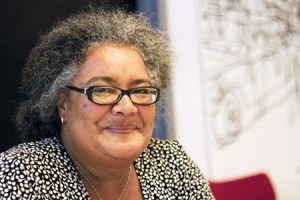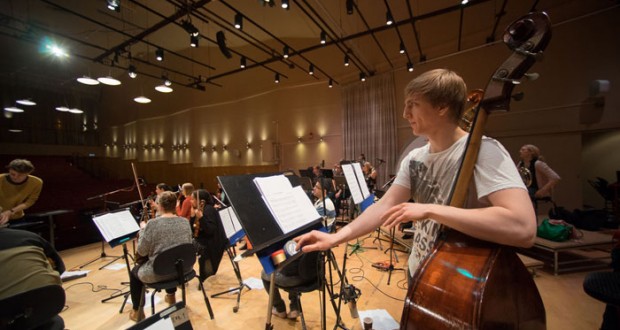Lund University was recently ranked as Sweden’s best university. But when it comes to reaching out to students without parents with a higher education, Lund is placed fifth in the country.
During her last year at high school, Linn Karlsson stood at a fair and compared Malmö University Collage to Lund University. Both Lund and Malmö were within commuting distance, and she would be accepted at both schools. She chose Malmö.
“I can’t put my finger on what it was actually, but Malmö University Collage felt more welcoming”, she says.
It is relevant that none of Linn Karlsson’s parents have a higher education. Her choice is therefore illustrative of an entire structure.
Uneven recruitment of students
In September Lund University was ranked as Sweden’s best university by QS World University Ranking. But when it comes to attracting students with parents who do not have a higher education, the University is ranked fifth in the country, according to Statistics Sweden.

Only 27.7 percent of students at Lund University have parents without a higher education. At Malmö University Collage, twenty kilometres south, the number is 42.5 percent. According to the Swedish Higher Education Act, universities should work actively to “broaden the recruitment” to their school, namely that students from additional parts of society apply to higher education. People from backgrounds where studying is unaccustomed are systematically underrepresented in the country’s universities.
The seat of learning’s responsibility
Malmö University College’s work for broadened recruitment has received praise from the government. The seat of learning works actively with everything from school visits as early as in primary school, introducing and making the academic world understandable for new potential students. The goal is to create an inclusive environment and support students with backgrounds where studying is unfamiliar.
Patricia Staaf at Malmö University Collage is the chairwoman at the national network Include, which works for broadened recruitment. According to her a combination of tradition, expectations from home and self-confidence is what lies behind this so called socially uneven recruitment to higher education. She points out that seats of learning have a responsibility to stop this development, and that is done by working actively.
“I believe it is incredibly important to start informing early. If you stand at a high school fair it is too late. It is important that young people from a certain background do not think ‘this university thing is not for me’”, she says.
A big step to Lund
At the cafeteria at Malmö University Collage Kajsa from Umeå is sitting, who is studying to become a teacher, and comes from a family without higher education experience. She thinks Lund University seems “a bit more high-class” than Malmö University Collage.
“It’s like there is a bunch of there are a bunch of old white geezers who are running Lund”, she says.
In the sofa next to her, is Kim. He comes from northern Sweden and is studying Game Development, none of his parents have a higher education.
“For me it is a big step to be here at Malmö University Collage at all. To study at Lund would be an even bigger step. Lund University feels more high-minded, there seems be incredibly high standards there”, Kim says.
Old Elite University
Lund University has started an investigation on how to improve the work on broadening the recruitment. The University has earlier established mentors at high schools in Skåne and invested in courses during the summer to reach new groups. Despite this, the University does not reach that many with a non-academic background.
“I wished we could have been as fortunate as Malmö. It can be a downside that we are a traditional university, as an image that here is heavy competition and a demand for high performance”, says Torbjörn von Schantz, Vice-Chancellor at Lund University. Leif Bryngfors, project manager for the University’s investigation about broadening the recruitment, agrees.
“We are an old elite University, plain and simple. Students who have a background of studying are attracted by that, but others might be frightened”, he says.
The Politic shifted
Both the Social Democratic and the right-wing governments have traditionally had different aims in politics on higher education. Patricia Staaf thinks this has had a big impact on how the universities prioritises.
“In the early 2000s this question was in focus and just about every university worked against uneven recruitment. Then in 2006 came the right-wing government and spoke about excellence and internationalising. That is where I find many universities, including Lund, lost momentum in this issue”, she says.
An alternative admission
Both Patricia Staaf and Leif Bryngfors think that the way forward is to look at alternative admission processes. According to Patricia Staaf, the present system is punishing students with low grades from high school and impedes broad recruitment.
“A possibility could be to increase the number of admissions from secondary adult education, something the previous government decreased. Another way could be that more programmes accept students based on portfolios and interview as for example the Medicine programme do”, she says.
“It is not about lowering the entry conditions but about creating an inclusive environment for good students from another social background”, she says.
FACTS
Broadened recruitment is about increasing recruitment of underrepresented groups to universities, where focus has been on getting those from homes where studying is unfamiliar to higher educations. In accordance with Swedish Higher Education Act (1992:1434), universities are to actively work at broadening their recruitment.
Broadened participation is about giving more people the chance to finish their studies.
Here are the most student from parents with a higher education
1. Stockholm School of Economics (72.5%)
2. Royal College of Music in Stockholm (61.4%)
3. Chalmers University of Technology (50.7)
4. Stockholm University of the Arts (50.2%)
5. Lund University (49.9%)
6. KTH Royal Institute of Technology (49.3%)
Article: Gustav Wirtén
Translation: Elise Petersson






